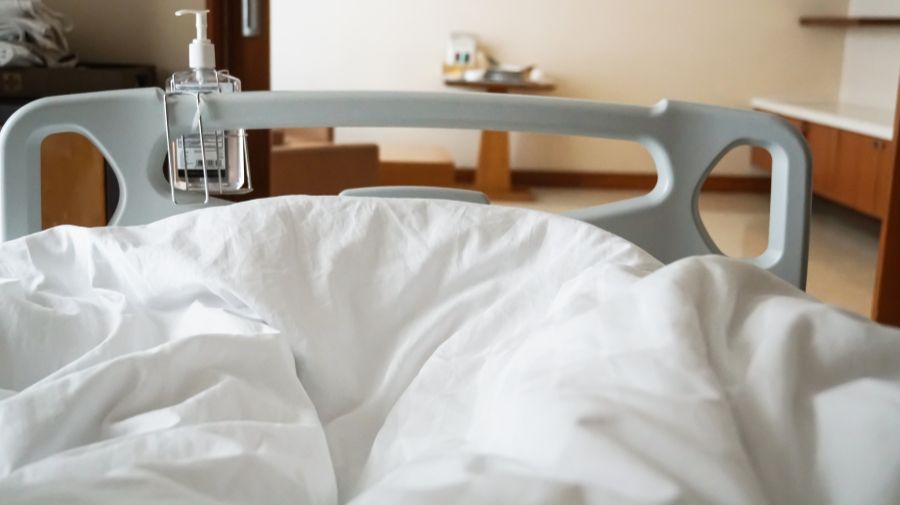7 Reasons to Use an Integrated Bed Management Module
Bed management software is not limited to hospitals. Proper bed management is essential to care for clients and to optimize your practice. Despite the clear need for a solid bed management system, many substance use recovery clinics still use spreadsheets or even pen and paper. This can be because practitioners don’t know they have options, are concerned the software is designed for hospitals only, or worry about the cost and implementation of such a system. There’s also the issue of having to learn and use yet another software and all the redundancies caused by multiple systems not properly communicating.
Yet there are a lot of benefits to using a bed management system. At Procentive, we know the value of using an all-in-one EMR so you can do everything you need to within your PMS. That’s why we highly encourage you to research bed management software options that are already integrated within your EMR. Using a fully integrated bed management module has many benefits, such as:
1. Simplify Client Placement
Substance use can affect a wide variety of people, each with unique circumstances and life stages. It’s important that all facets of care should be tailored to their individual needs. Whether it’s accommodating an illness, managing chronic pain, or making sure they can still be with their children, providing them with the right bed in the right location can make a huge impact. That can make the difference between an individual seeking treatment and being unable to do so. The right bed management module should include options that let you tag and update bed status based on events and needs so you can see at a glance if a bed needs cleaning, if a client with a baby can stay or if a client with medical needs can be accommodated.
An efficient bed management module should allow you to immediately see occupied and free beds, when they can be filled, if they need to be cleaned and who is in them. This allows you to place clients more quickly, so you spend less time navigating your system and more time treating clients. It’s particularly helpful for large facilities and campuses with multiple buildings since it reduces the amount of messages, phone calls, and other tasks that halt productivity to check on bed availability.
Larger facilities and multiple buildings can also benefit from granular detail provided by bed management systems; for example, assigning clients to a wing where children are allowed, or setting them up depending on the length of stay.
2. Reduce Wait Time
If your bed management software gives you a substantial overview and lets you create custom waitlists, clients will spend less time waiting and more time being taken care of. Your practice can operate more efficiently. Wait times are not only reduced for clients; if you can tag beds to be cleaned or clients that need to be moved, you can use this view in your EMR to create tasks, whether it’s cleaning a room or transporting a client to a room better suited to their needs. Nurses can know when a client needs medication or whether a child is with a client. Administrators spend less time trying to figure out if a bed is available, clean and where to place clients. Staff can quickly find out if a bed was recently freed and that it’s ready to be prepared for another client. Less time spent searching for information means more time spent on quality of care.
Placing clients more quickly is especially important considering that clients can easily spend between a month and a year waiting for a bed to become available. Depending on the severity of their substance use problem, a client could lose income, housing, transportation, become more severely ill, or even die.
3. Streamline Scheduling
Using a bed management system that offers an overview of your bed situation allows you to quickly schedule clients for treatment they need, as well as make sure your staff can care for clients during the best time. Efficient waitlists can make filling beds much easier once previous clients leave, while seeing the types of beds available lets you schedule clients more quickly based on their medical concerns or dependents. You can create long-term plans for bed occupancy and care programs more easily. If you know that more beds need cleaning during a specific week or that clients with a more severe problem will be using the beds, that means you can proactively schedule more cleaning staff or more nurses with the skills needed to treat clients to prevent staffing issues that could reduce the quality of care, as well as last-minute staffing changes that can lead to burnout.
4. Improve Efficiency
Reduce bottlenecks in client flow. Speedier intake gets clients to their bed and treatment quickly, so they spend less time waiting and more time being cared for. Your staff can also know more quickly when to check up on clients, clean their room, perform testing or bring them medicine. Tasks such as attendance taking or finding a bed’s client history are made easier. If you know which beds are full and which aren’t, as well as the type of bed, that allows you to save time and money by not focusing on empty beds, which in turn allows your staff to spend more time with clients. It also makes transferring clients much easier. That data also helps you know which medicine to restock more often, whether you need material for children, to make more or less food, and reduce waste.
Make sure to use a bed management system that offers flexible configuration, since your setup is probably not the same as everyone else’s. A flexible configuration can also be helpful if your practice ever undergoes renovations, additional rooms being built, or becomes part of a larger campus. You can organize beds in the way that makes the most sense for your organization.
An integrated bed management system means that users also spend less time entering the same data in other parts of the system. Reducing redundancies save a lot of time and can reduce errors. Staff can spend less time entering the same data and more time caring for clients, while you can be assured your services are backed by data and audit-proof.
5. Use Waitlists to Prioritize Better
Waitlists can be extremely helpful to keep client flow going. Sometimes, clients have to be waitlisted, whether it’s because of incarceration, life events, or bed capacity. Creating efficient waitlists allows you to prioritize clients who need a bed based on needs, such as length of stay, medical conditions, availability, dependents, and more. Using a system that lets you customize and filter waitlists can help you improve efficiency and help ensure you can help more clients. For example, if a crib opened, that lets you know you can bring in a client with a baby. Instead of having to find that client in a common waitlist, you can look at your specialized waitlist to quickly fill that bed.
A flexible waitlist feature is also very helpful for long-term planning. Clients have varying levels of needs and lengths of stay, so using your waitlist can help prioritize people effectively and fill your beds quickly when they’re available.
As we mentioned earlier, clients can easily spend a month or a year waiting for a bed to become available. Using custom waitlists can help you prioritize clients with more urgent situations more quickly, which could save their lives.
6. More Revenue
In addition to populating a schedule, an integrated bed management module can also populate attendance data to your billing information. This helps reduce potential mistakes and saves a lot of time when compared to manually transcribing client attendance. Filling beds more quickly and avoiding issues with lack of bed availability helps you get paid faster for a stronger revenue cycle. And the improvements in efficiency save you time and money.
7. A Better Client Experience
If your bed management system is more efficient, clients spend less time waiting and more time being cared for. This makes them happier and can help them get healthier faster. Being able to tell quickly whether a client has children, medical needs, or how long they’ll stay allows you to tailor your treatment to them more quickly. It can even be safer for clients, as you can keep an eye on their medication, allergies, and issues that can require medical attention. A comprehensive bed management system can help users keep track of clients more easily, allowing a proactive treatment plan and quicker reaction time during emergencies.
Integrated bed management can show benefits for everyone in your practice, from staff to clients. Procentive offers a comprehensive bed management module designed for substance use recovery practices. Combine the usability of your PMS with bed management features to spend less time on individual tasks and more time offering quality services.
Want to see our bed management features for yourself? Schedule a demo!



